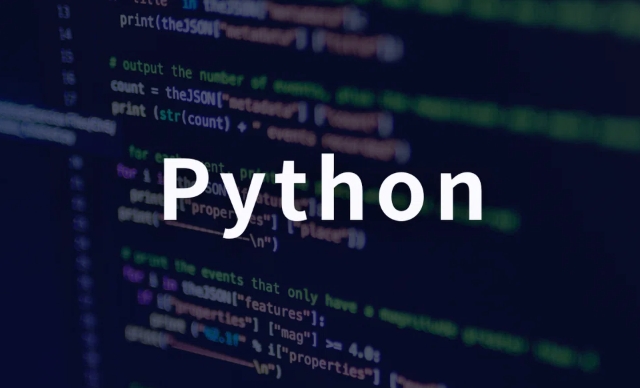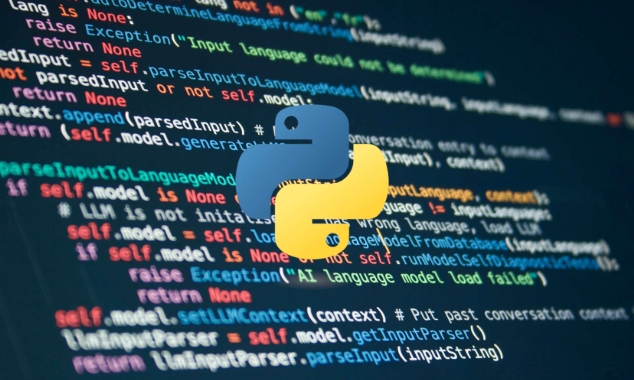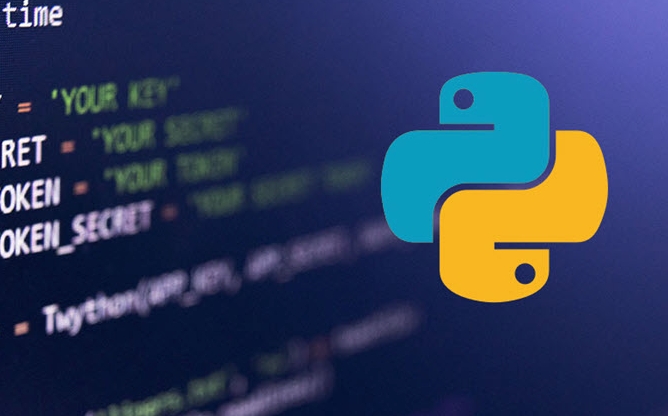The core of custom logging Handler is to inherit logging.Handler and implement the emit() method, which is suitable for scenarios such as sending logs to emails, writing to databases, or pushing remote servers. 1. Customization situations include: pushing logs to Slack or DingTalk, recording to database or API, processing by level and adding additional information; 2. The implementation method is to inherit logging.Handler and rewriting emit(), where you write custom logic such as sending HTTP requests; 3. When using it, you need to pay attention to exception handling, formatting output, setting appropriate levels and formatters, and avoid duplicate output and propagation problems.

Python's logging module is very flexible, and one of the core advantages is that it can customize the log processor (Handler). Although the default Handler is sufficient, sometimes we need more flexible output methods, such as sending logs to emails, writing to databases, or pushing to remote servers. This is when a custom Handler comes in handy.

Why customize Handler?
Python's built-in Handlers, such as StreamHandler and FileHandler , can meet most basic needs. But if you encounter the following situations, you may need to customize:
- Want to send logs to notification channels such as Slack or DingTalk
- Logs need to be recorded to the database or remote API
- I hope to do different processing according to the log level
- Want to add additional information, such as user ID, request path, etc.
In these scenarios, inheriting logging.Handler and rewriting emit() method can implement your own log processing logic.

How to customize a Handler?
The core of custom Handler is to inherit logging.Handler and implement emit() method. This method will be called every time a log event occurs.
A simple example: Send logs to an HTTP interface.

import logging
import requests
class WebHookHandler(logging.Handler):
def __init__(self, url):
super().__init__()
self.url = url
def emit(self, record):
log_entry = self.format(record)
try:
requests.post(self.url, json={'log': log_entry})
except Exception:
pass # can add log failure retry logicWhen using it, just add it like other Handlers:
logger = logging.getLogger(__name__) handler = WebHookHandler('https://your-api.com/log') formatter = logging.Formatter('%(asctime)s - %(levelname)s - %(message)s') handler.setFormatter(formatter) logger.addHandler(handler)
A few points to note:
- The
emit()method needs to handle exceptions and cannot let it affect the main process. - If you need to format the output, remember to call
self.format(record) - Initialization parameters can be defined freely, such as the above url
Frequently Asked Questions and Notes
Handler added but not effective?
- Check whether
levelis set, such ashandler.setLevel(logging.ERROR) - Is
formatterset, otherwise the log content may be incomplete - Make sure the logger itself does not set
propagate=False, otherwise it may not be passed to the handler
Repeated output of logs?
- It may be that multiple handlers output the same content at the same time
- Or the logger parent also adds handler (it will be propagated to root logger by default)
- Solution: Check whether
logger.addHandler()is called repeatedly, or setlogger.propagate = False
The emit method throws an exception and causes the program to crash?
- Be sure to use try-except to enclose the key logic in
emit() - It is best to add a retry mechanism or failure record logic to facilitate troubleshooting
Let's summarize
It is actually not difficult to customize the logging handler. The key is to understand the role of emit() method and the call timing. You can expand it into various forms according to your business needs, such as writing to the database, sending emails, and even pushing it to the front-end interface in real time. Just remember a few key points: inheriting Handler, implementing emit, paying attention to exception handling and formatting output. Basically that's it.
The above is the detailed content of Customizing Logging Handlers in Python. For more information, please follow other related articles on the PHP Chinese website!

Hot AI Tools

Undress AI Tool
Undress images for free

Undresser.AI Undress
AI-powered app for creating realistic nude photos

AI Clothes Remover
Online AI tool for removing clothes from photos.

Clothoff.io
AI clothes remover

Video Face Swap
Swap faces in any video effortlessly with our completely free AI face swap tool!

Hot Article

Hot Tools

Notepad++7.3.1
Easy-to-use and free code editor

SublimeText3 Chinese version
Chinese version, very easy to use

Zend Studio 13.0.1
Powerful PHP integrated development environment

Dreamweaver CS6
Visual web development tools

SublimeText3 Mac version
God-level code editing software (SublimeText3)

Hot Topics
 Polymorphism in python classes
Jul 05, 2025 am 02:58 AM
Polymorphism in python classes
Jul 05, 2025 am 02:58 AM
Polymorphism is a core concept in Python object-oriented programming, referring to "one interface, multiple implementations", allowing for unified processing of different types of objects. 1. Polymorphism is implemented through method rewriting. Subclasses can redefine parent class methods. For example, the spoke() method of Animal class has different implementations in Dog and Cat subclasses. 2. The practical uses of polymorphism include simplifying the code structure and enhancing scalability, such as calling the draw() method uniformly in the graphical drawing program, or handling the common behavior of different characters in game development. 3. Python implementation polymorphism needs to satisfy: the parent class defines a method, and the child class overrides the method, but does not require inheritance of the same parent class. As long as the object implements the same method, this is called the "duck type". 4. Things to note include the maintenance
 Python Function Arguments and Parameters
Jul 04, 2025 am 03:26 AM
Python Function Arguments and Parameters
Jul 04, 2025 am 03:26 AM
Parameters are placeholders when defining a function, while arguments are specific values ??passed in when calling. 1. Position parameters need to be passed in order, and incorrect order will lead to errors in the result; 2. Keyword parameters are specified by parameter names, which can change the order and improve readability; 3. Default parameter values ??are assigned when defined to avoid duplicate code, but variable objects should be avoided as default values; 4. args and *kwargs can handle uncertain number of parameters and are suitable for general interfaces or decorators, but should be used with caution to maintain readability.
 Explain Python generators and iterators.
Jul 05, 2025 am 02:55 AM
Explain Python generators and iterators.
Jul 05, 2025 am 02:55 AM
Iterators are objects that implement __iter__() and __next__() methods. The generator is a simplified version of iterators, which automatically implement these methods through the yield keyword. 1. The iterator returns an element every time he calls next() and throws a StopIteration exception when there are no more elements. 2. The generator uses function definition to generate data on demand, saving memory and supporting infinite sequences. 3. Use iterators when processing existing sets, use a generator when dynamically generating big data or lazy evaluation, such as loading line by line when reading large files. Note: Iterable objects such as lists are not iterators. They need to be recreated after the iterator reaches its end, and the generator can only traverse it once.
 Python `@classmethod` decorator explained
Jul 04, 2025 am 03:26 AM
Python `@classmethod` decorator explained
Jul 04, 2025 am 03:26 AM
A class method is a method defined in Python through the @classmethod decorator. Its first parameter is the class itself (cls), which is used to access or modify the class state. It can be called through a class or instance, which affects the entire class rather than a specific instance; for example, in the Person class, the show_count() method counts the number of objects created; when defining a class method, you need to use the @classmethod decorator and name the first parameter cls, such as the change_var(new_value) method to modify class variables; the class method is different from the instance method (self parameter) and static method (no automatic parameters), and is suitable for factory methods, alternative constructors, and management of class variables. Common uses include:
 How to handle API authentication in Python
Jul 13, 2025 am 02:22 AM
How to handle API authentication in Python
Jul 13, 2025 am 02:22 AM
The key to dealing with API authentication is to understand and use the authentication method correctly. 1. APIKey is the simplest authentication method, usually placed in the request header or URL parameters; 2. BasicAuth uses username and password for Base64 encoding transmission, which is suitable for internal systems; 3. OAuth2 needs to obtain the token first through client_id and client_secret, and then bring the BearerToken in the request header; 4. In order to deal with the token expiration, the token management class can be encapsulated and automatically refreshed the token; in short, selecting the appropriate method according to the document and safely storing the key information is the key.
 What are Python magic methods or dunder methods?
Jul 04, 2025 am 03:20 AM
What are Python magic methods or dunder methods?
Jul 04, 2025 am 03:20 AM
Python's magicmethods (or dunder methods) are special methods used to define the behavior of objects, which start and end with a double underscore. 1. They enable objects to respond to built-in operations, such as addition, comparison, string representation, etc.; 2. Common use cases include object initialization and representation (__init__, __repr__, __str__), arithmetic operations (__add__, __sub__, __mul__) and comparison operations (__eq__, ___lt__); 3. When using it, make sure that their behavior meets expectations. For example, __repr__ should return expressions of refactorable objects, and arithmetic methods should return new instances; 4. Overuse or confusing things should be avoided.
 How does Python memory management work?
Jul 04, 2025 am 03:26 AM
How does Python memory management work?
Jul 04, 2025 am 03:26 AM
Pythonmanagesmemoryautomaticallyusingreferencecountingandagarbagecollector.Referencecountingtrackshowmanyvariablesrefertoanobject,andwhenthecountreacheszero,thememoryisfreed.However,itcannothandlecircularreferences,wheretwoobjectsrefertoeachotherbuta
 Python `@property` decorator
Jul 04, 2025 am 03:28 AM
Python `@property` decorator
Jul 04, 2025 am 03:28 AM
@property is a decorator in Python used to masquerade methods as properties, allowing logical judgments or dynamic calculation of values ??when accessing properties. 1. It defines the getter method through the @property decorator, so that the outside calls the method like accessing attributes; 2. It can control the assignment behavior with .setter, such as the validity of the check value, if the .setter is not defined, it is read-only attribute; 3. It is suitable for scenes such as property assignment verification, dynamic generation of attribute values, and hiding internal implementation details; 4. When using it, please note that the attribute name is different from the private variable name to avoid dead loops, and is suitable for lightweight operations; 5. In the example, the Circle class restricts radius non-negative, and the Person class dynamically generates full_name attribute






